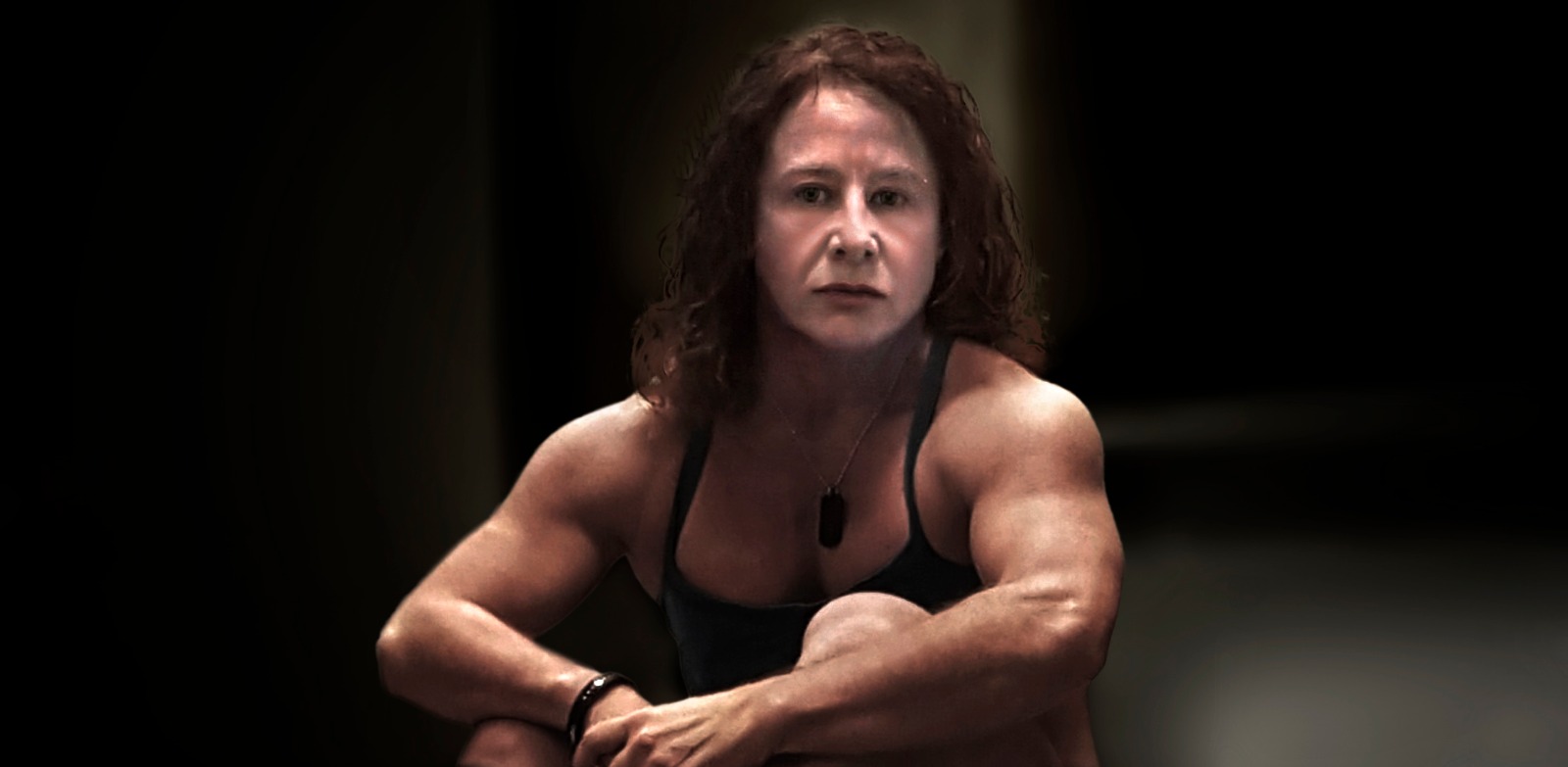
Introduction
Remember the inspirational saying “age is just a number”? Bullshit. It’s not just a number. It’s decay, it’s progressive loss, and it sucks. We can focus on the suck part (and I will), but we can also focus on the gainz. Yes, there can be gains in experience, knowledge, wisdom, and transcendence. Even more interesting and mysterious, age may bring about a sense of awe and awareness of how little we know and how much we can still learn. We'll get there. But look around: most people age and remain as stupid as when they were young, frequently stupider.
It’s easier, and even automatic, to focus on the suck part. We embrace it, almost rejoicing in it.
We condescendingly accept very young adults to be a little unaware of their ignorance. After all, they are newcomers to the world of knowledge. But when they come to you (or to your class) for guidance, you expect nothing but the most impeccable academic behavior from them: ignorance-awareness, logical strictness, and most of all, absolute respect for the scientific method and fact building. God forbid they ask a rhetorical question or, worse, refuse to treat evidence as king. And then you will slip into logical heresy and bark arguments from authority at them.
Remember the days you used to be patient? They are gone. If you have kids, you marvel at the fact that once upon a time, you had the energy to change diapers, cook healthy meals that the little bastards would smear all over the walls, and chase them around the house until their batteries ran out. Were you the same person? Today you can’t babysit your grandchild for more than a few hours without taking ibuprofen for two days.
RECENT: A Hitchhiker’s Guide to the Gym Galaxy
But hey, you can't be old: you are an athlete. You throw, lift, roll or run more than all the twenty or thirty-somethings you know. You don’t age. Forever young. Wrong: you are aging. In fact, you are probably old. Everybody ages: welders, sculptors, writers, scientists, veterinarians, and athletes too. The old writer will complain about their tired eyes and, if they are smart, invest more and more in ergonomic desks, keyboards, and office equipment in general. Unless you were a successful professional athlete in your prime, you will still be working for your income, and you are already a retired or "master" athlete.
Let’s talk numbers: if you weren’t a reckless motherfucker, chances are that even if you pushed your body into unhealthy limits you age better than the inactive and even the moderately active adult.
Your pain threshold and tolerance are higher, and for strength athletes, our pain sensitivity is reduced (Walker 1971, Assa et al., 2019).
So why do you complain so much? You complain more than Paul, who has diabetes and high blood pressure, and Mary, who is painfully overweight, has arthritic knees, hips, and back, walks slowly, and breathes with difficulty. Shame on you. They are not complaining. They invite you for dinner, they have fun, they drink and smoke a little weed, and they tell you that you need to take it easy.
The problem is that thirty years have passed and you failed to update yourself. You still think of yourself as that guy who spent hours every day at the pool, caught hard throws at the court, and lifted much more weight than even the fittest adults at a regular gym could.
One day, you wake up old. Suddenly, you are painfully aware that you have chronic injuries, that your metabolism has changed and sometimes got really messed up, and that you also feel chronically tired for no reason. Wait: if the injuries are chronic, how come you became aware of them “suddenly”? Because the damn thing took years to mean something. When it does mean something, it will never un-mean it: it means you are old.
If that’s you, don’t worry: that’s all of us. The reason is simple: if we are lucky, these changes are incremental. Unless you had a bad accident and woke up crippled at the hospital, all these chronic issues have been growing very slowly. Because soreness, fatigue, sleep quality, and general wellbeing fluctuate at any given time, our subjective perception of change is buffered. Everything is ok until it hurts like a motherfucker; it's ok until you are so breathless that you feel you are asphyxiating; it's ok until your vision is blurred and you black out. The tendon damage that ruined your morning had been progressing for 17 years, but you couldn't know it. Your loss of conditioning and maybe even your breathing issues could only be noticed when you had dramatic shortness of breath episode. Maybe even bronchitis and adult-onset-asthma. As for diabetes, it may take even longer, and if the upward trend in your fasting glycemia wasn’t tracked, it could well take you by surprise.
Granted: that’s when increased self-awareness and a problem-solving attitude help. You don’t have to romanticize aging as this blissful and free stage of life, but it’s not the end of the world. All the small and big annoyances are normal because they are the norm, the rule rather than the exception. It’s the price we pay for extending our life far beyond our prime reproductive years, like most animals.
Going back to the first paragraph, self-awareness and a problem-solving attitude are what make the difference between aging catastrophically and aging (more or less) gracefully. Self-awareness is useful everywhere in life. It’s particularly useful in aging since it helps you to identify issues before they become a major injury or disease. It also comes in handy when you are already old and living a delicate balance between elegantly managing annoyances and free-falling into a cascade of decay responses. A problem-solving attitude means understanding that most of the things you are going through are not very well understood. It means accepting that some things must be handled even if we’re not sure what they are. It means figuring out what tools there are for handling them and using them reasonably and objectively.
Many of the most challenging physiological enigmas are related to aging.
In this "Diary of an Aging Athlete" project, I will discuss issues that are not well understood and I won't pretend they are. However, I will do my best to focus on graceful aging, on the best scientific evidence for your decisions, and on the gainz.
Hi, my name is Marilia. I'm 58 years old. I'm a former fencer, dancer, runner, swimmer, and a lifter for as long as Sophia, Themis, and Rhea (my Olympic lifting bars) will have me, which is hopefully until I die. We're in this together.
Today, we’ll talk about what age means for us humans.
Chronological Age and Relative Age
Chronological age is what your birth certificate says. Relative age refers to the number of years you have been doing a certain activity. For example, many curriculum vitae templates now omit the date of birth but provide a detailed timeline of specific professional and educational achievements. Someone who went back to college at 40 and finished their Ph.D. at 55 is educationally as old as a 25-year-old Ph.D. who went from high school directly to college. A 42-year-old lifter who started lifting at 15 is much older than another lifter who is 45 years old but started to lift at 43.
Why does this matter?
Because the basic, general, universal aging process is neither basic nor general and much less universal. Granted: all living beings age. Humans age. However, even in similar diets, adopting similar occupations and physical activity levels, no two humans age alike. So, doesn't chronological age exist? Yes, it does, but first, aging is a combination of several physiologic processes, most of which will be influenced by environmental factors in interaction with the person’s genetic makeup. Second, if there is a significant inter-individual variation in rate, then the exact number of lived years is just part of the story.
In 1991, the book Evolutionary Biology of Aging offered the following definition of aging: "a persistent decline in the age-specific fitness components of an organism due to internal physiological deterioration" (Rose, 1991). Later, the same Rose and collaborators pointed out that previous research neglected the huge variability in aging mechanisms and timeline and proposed lifelong heterogeneity. Not only do the declining processes vary in the population, but their rate changes within the lifetime of a single individual.
Aging includes three parts (Chalise 2019):
- Growth and development: in our infant years
- Maturation: in our teenage and young adult years, and
- Senescence: after age 30.
In all the articles under this Diary of an Aging Athlete project, aging will primarily refer to senescence.
When we restrict our investigation to the effect of time on a specific activity, we get closer to something useful.
How do we measure relative age? There’s the obvious answer that the relative age is the chronological age of a specific activity for a certain individual. That's useful information. However, it doesn’t say anything about the physiological status of that individual. There are better predictors (or measurements) of physiological or functional age: they are called biomarkers (Wagner et al., 2016, Baker III et al., 1988). There is no consensus about which biomarker constitutes the most reliable biological parameter of aging, but several have been advanced. This table summarizes the available ones:
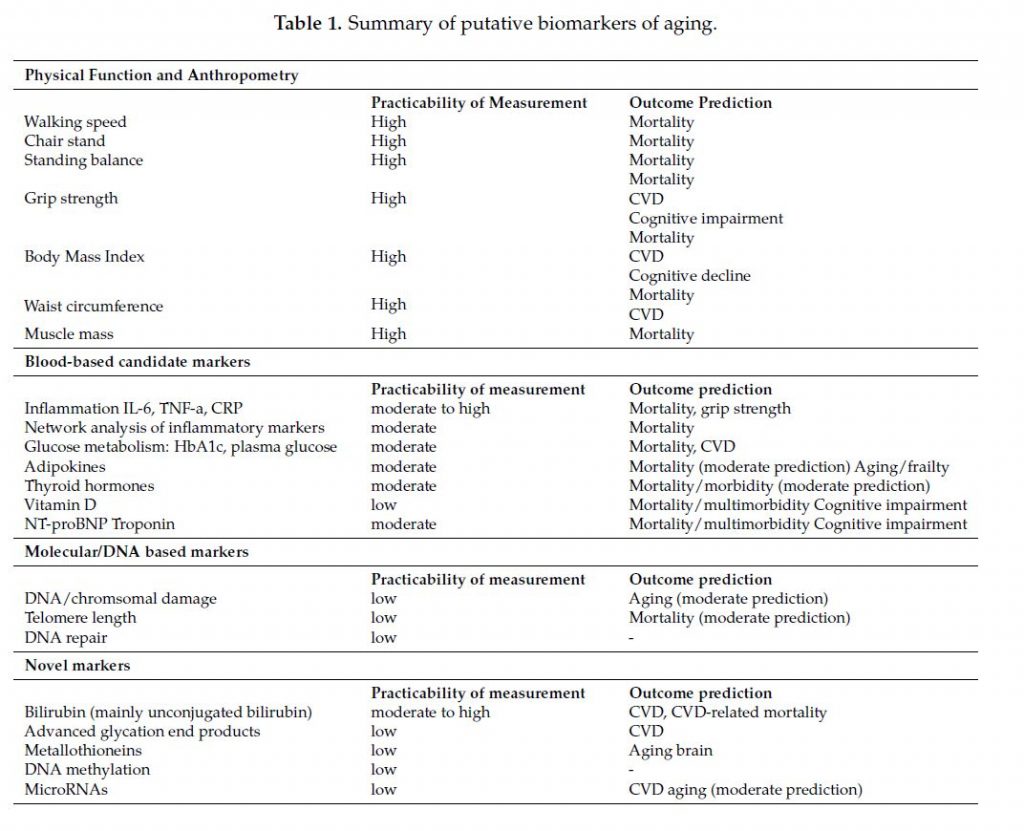
When your doctor tells you something like "not bad for your age" or "my god, this spine is worse than that of an 84-year-old mine worker," he is using a biomarker. You may not like it but it's information. Not all biomarkers apply to athletes: that's another source of anxiety for us and a source of conflict with the medical community. There is not enough evidence to create an athlete-specific biomarker chart.
Lifelong athletic activity causes several adaptations. Many of them are probably directly responsible for the average higher quality of life and longevity of former elite athletes when compared with the same cohort in the general population. Lifelong athletic activity is also correlated with a higher incidence of specific injuries, some of which may be pretty nasty and debilitating.
The first takeaway here is, then, that no two people will age alike or at the same rate. So let’s not be mad at Steve because he’s our age and never had orthopedic surgery, doesn't have nerve impingements, "bad" knees or hips, and surfs during the weekends with his grandchildren. No, we're not mad at damn Steve and his stupid surfboards. The second takeaway is that it will take time for evolutionary studies on senescence to render any useful application because we're too different from those damn fruit flies, worms, and parasites. The third takeaway is that evolutionary biology of senescence is certainly fascinating but we don't actually know a damn thing about the genetic architecture of aging, so fuck Steve (Promislow et al., 2005).
Relative Age and Quality of Life
Statistically speaking, participating in elite sports activity is associated with superior longevity. Former elite athletes live longer, assuming all current elite athletes will be former ones if they age and live longer.
We have known for a while that sports participation is associated with several physical health benefits, including a reduction in all-cause mortality, higher lifespan longevity, and a reduced risk of diabetes, cardiovascular disease, and osteoporosis.
So we do have a better quality of life, right? How else would we live longer? Maybe. Maybe not.
Increased physical activity is associated with the physical health benefits listed above. We know, however, that an elite athlete is not just someone more physically active. We are more physically active in a different way.
With this in mind, Filbay and collaborators (2019) measured quality of life through surveys that assessed physical component scores and mental component scores. The study included 6692 former athletes. They concluded that former athletes had a higher quality of life but chiefly for its mental component.
Complicators in this study were: the discrepancy of results; the fact that former athletes who became inactive are a physiologically different class from former athletes who never quit being active; and the results of serious accidents and disabling sports injuries.
Some studies suggest that the memories of having experienced high-performance athletics are a factor in former athletes' greater quality of life and life satisfaction (Filbay et al., 2019).
The bottom line is that unless you screwed up badly and were horribly unlucky, you should have a higher quality of life and life satisfaction than other folks our age. Except for Steve. Fuck Steve.
Relative Age and Experience
Between the two hypothetical athletes that we are comparing here—you, the chronologically younger, more seasoned athlete, and that guy who started lifting a few years back—you are certainly more experienced than the other guy. According to the APA dictionary of psychology, experience is "an event that is actually lived through, as opposed to one that is imagined or thought about" or "a stimulus that has resulted in learning." In sports, it involves the acquisition, automation, and expert application of technical skills as well as knowledge (or wisdom) concerning all that is involved in training and competing.
Any activity in which the goal is to gain expertise or higher performance follows a basic sequence that goes from the cognitive stage, through the associative stage, and finally to the autonomous stage (Fitts & Posner 1967).
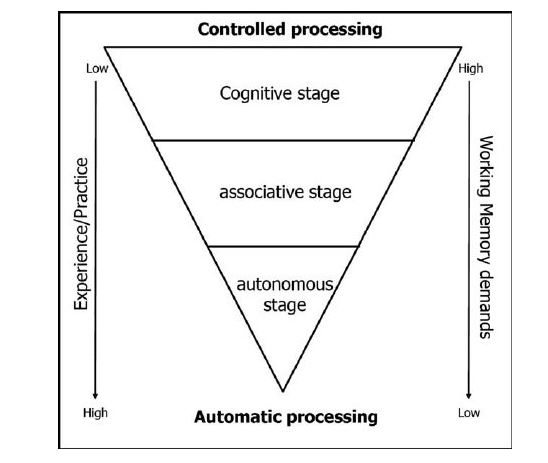
This model and the several subsequent improvements on it describe a learning process. While learning can be subdivided into stages, it never ends.
Motor learning leads to performance on a set of motor tasks. However, to maintain performance, motor commands need to adapt. There are certain skills that, once learned, are usually retained for a very long time—“one never forgets how to ride a bike." The application of acquired skills to a specific task, in contrast, will always require adaptation (Kording et al., 2007).
While the chronologically older but sports-wise younger lifter will have mastered lifting skills to the level of automation in a relatively short time and will retain it, he doesn’t share all the cycles of adaptation that you, the younger-older athlete, have gone through. At each change in your body, a new motor adaptation and learning process took place. Nothing can take that complex experience from you, and nothing substitutes that type of learning.
Within the greater framework of motor learning, motor skill acquisition can be understood as a transformation of declarative (or explicit, or codified) knowledge into procedural (or tacit) knowledge. The first type (declarative, explicit, or codified) is the knowledge that can be described (verbally or orally). Procedural (or tacit) knowledge is the knowledge that is employed to "do" something, where description is insufficient to exhaust content, and which is usually acquired through imitation and repetition, but not necessarily (Collins 2010, Maxwell et al., 2003, Furley & Daniel 2010). Procedural knowledge can be generated by the “proceduralization” of declarative knowledge.
In our comparison between you, a seasoned athlete, and the hypothetical new guy, you have much more procedural knowledge and working memory (important for decision-making and application of declarative knowledge) than the new guy.
That’s something, isn’t it? It took a few scratches to get here but now you know a whole bunch of stuff about a bunch of more stuff!
Relative Age, Age, and Performance
Even considering all the inter-individual variation and population diversity concerning aging biomarkers, there is a demographically measurable and significant decline in physical performance with age.
These charts, for example, illustrate the decline in peak VO2 per decade of life (Fleg et al., 2005).
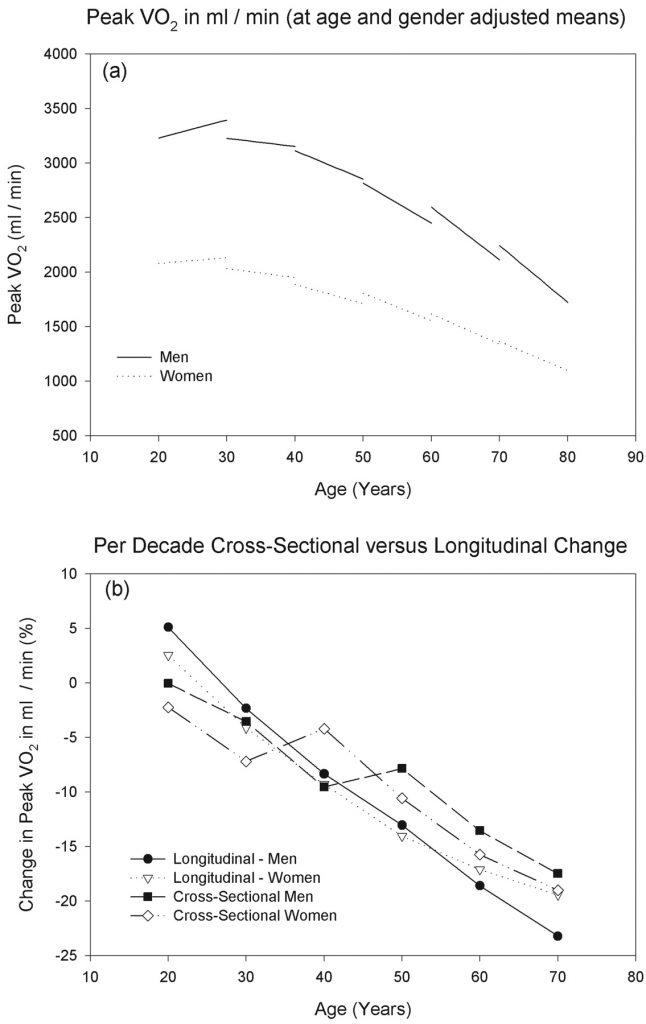
Peak performance in strength parameters is less well-behaved in quantitative studies, possibly because there are too many different phenomena involved in what is being measured. Hughes and collaborators (2001) published a quantitative longitudinal study about maximal dynamic muscle strength changes with age, attempting to associate them with physical activity, muscle mass, and health status. There is a substantial strength decline. However, muscle mass explained only five percent of the variance while the two other variables lack association with the decline.
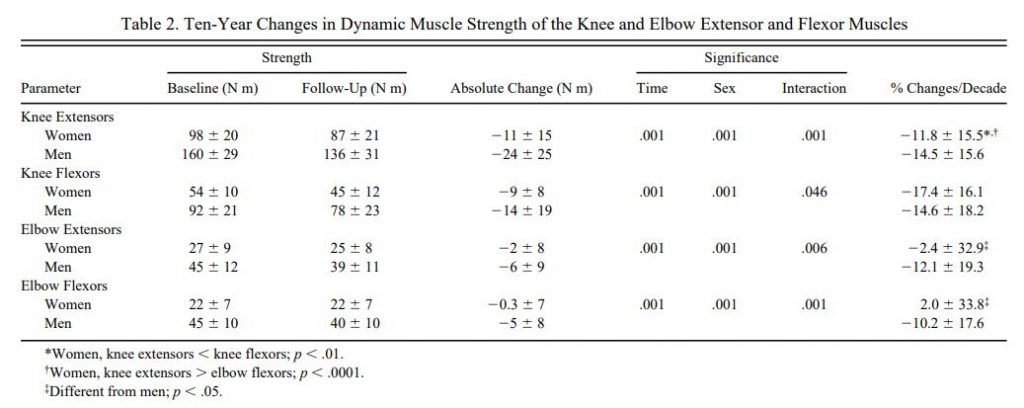
There is more at play in what we call strength tasks than what is being measured. When the age-related decline in sports performance by type of predominant task is studied, we can see that the age of peak performance is different when comparing dynamic strength with endurance tasks (Allen & Hopkins 2015).
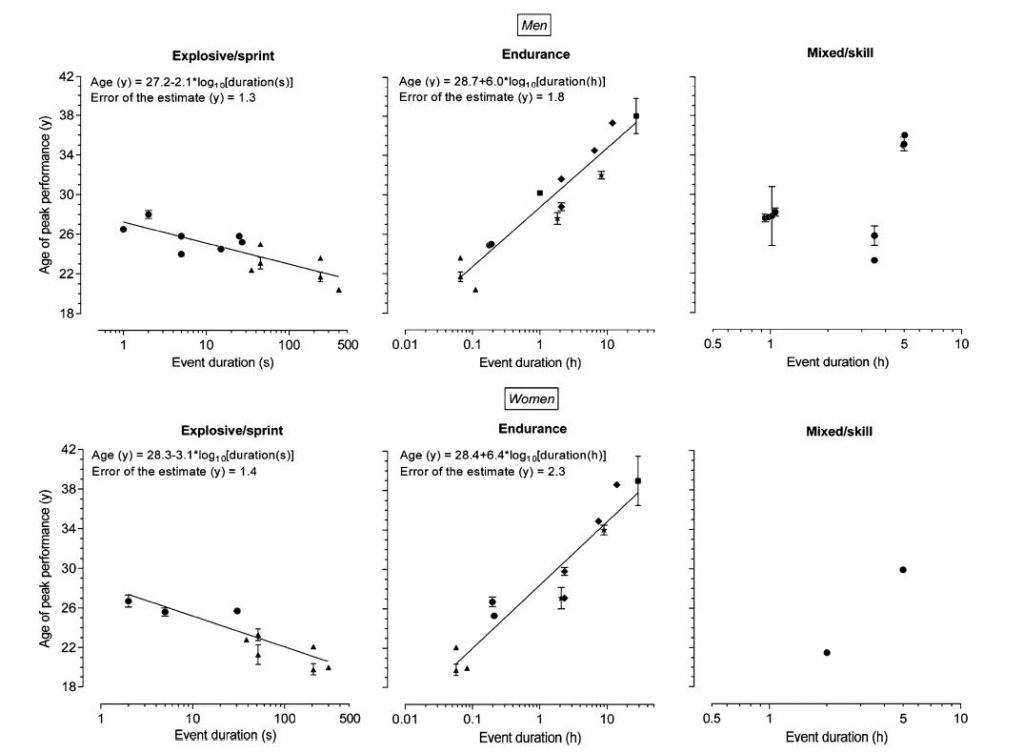
In a study comparing lower extremity strength loss among older adults with mobility limitations with healthy ones in the same cohort, Reid and collaborators (2014) concluded that different physiological mechanisms were at play in each group. “Neuromuscular changes may be the critical early determinant of muscle power deficits with aging,” they wrote. Neuromuscular activation declines with advancing age, and at least one study suggests that it contributes to power production decline and precedes mobility function decline (Clark et al., 2013).
There are too many factors involved in age-related strength decline. There is evidence that obesity accelerates it (de Carvalho et al., 2019), that high levels of homocysteine are associated with physical function decline in general (Vidoni et al., 2018), and other putative factors are being studied, given the importance of strength loss for quality of life and public health concerns (Metter et al., 2002). All we know is that we can all expect age-related decline. At what rate and how, there is not enough evidence to say.
There are some general takeaways from the evidence mentioned up to now:
- While remaining active won't stop the aging process, it certainly contributes to a better quality of life, which, in turn, makes training more efficient and pleasant, which, in general, leads to better strength adaptation or maintenance. It makes your daily life more manageable and makes you happier. Happy people perform better;
- Obesity is probably not your friend. Yes, there are super heavyweights in several sports but obesity is associated with strength loss and with decrements in several other critical health biomarkers;
- Lack of muscle strength and mass are predictors of all-cause mortality. It’s not far-fetched to assume that the opposite (nice muscle strength and mass) may prevent many bad, degenerative things (Metter et al., 2002);
- Athletes age differently and, in general, better than non-athletes (Concannon et al., 2012);
- If you live long enough and if you have been an athlete long enough, you will experience some performance decrease. The only people to whom this doesn’t apply are the “young old athletes" who started a sport late in life, and Steve. Fuck Steve.
Relative Age and Injury
There's a higher chance that the 42-year-old lifter mentioned earlier has accumulated more damage to their musculoskeletal system than the 45-year-old lifter. By the same token, his or her older athletic age probably gave them a bone density and muscle development advantage that the other lifter will never catch up to. That, of course, assuming they didn't screw up so badly as to become completely inactive.
We already know we live longer, with a higher quality of life and higher levels of life satisfaction, as previously mentioned. We also have a lower incidence of cancer and cardiovascular disease. But are we less injured?
Unsurprisingly, chronic and overuse injuries are the majority of our issues and are much more prevalent among us than among young athletes (Chen et al., 2005, Kannus et al., 1989). But we were young athletes once, weren’t we? We remember how it felt not to wake up every day so highly aware of our chronic pains, don’t we?
That's a price we pay. This is not as consensual in the scientific literature as other issues but it seems that statistically speaking, former athletes retain more chronic injuries than the non-athlete sample in the same cohorts (Simon et al., 2014, Runacres et al., 2020, Palmer et al., 2021).
Still, these numbers depend on the population being studied and compared. In the USA, for example, the incidence of locomotor disability in the adult population is 13.7 percent (Centers for Disease Control and Prevention 2020). There is robust evidence suggesting that locomotor disability is associated with physical inactivity (Kim 2013, Akai 2016), not to mention obesity (Magliano 2008, Ells et al., 2006).
At least in developed countries with serious inactivity-related public health problems, older, life-long athletes may retain more injuries of a certain type, and that may be more or less disabling. Still, in the general population, factors now known to be much more detrimental (such as inactivity and obesity) and associated with locomotor disability prevail.
While nobody would be naive enough to say that we’re golden or to deny that our retained injuries are a problem, would you trade places with your hypothetical obese and inactive twin who needs a wheelchair to move and caretakers for his or her basic needs? I wouldn’t think so.
We Rock! And Fuck Steve
Between taking our morning supplements, complaining about mornings, and our balanced lunch, we should remember to pat ourselves on the back: folks like us are changing the way aging is scientifically understood. Since we started participating in our master’s championships and studies investigating our physiology and health were published, many of the negative changes attributed to normal aging have been found to be the result of a sedentary (and sad) lifestyle:
The master's athlete may be able to maintain and increase strength in situations where strength training has not been previously engaged in. However, the literature lacks longitudinal studies demonstrating improvements in strength with age in master's athletes who have maintained habitual strength training. Studies in the past have shown that aging results in changes in fiber type, with a shift towards a higher percentage of type I fibers. This again may be an adaptation to lack of use. Decreases in heart function and aerobic capacity appear to be immutable, but in the master's athlete, the rate of this decrease can be slowed. The master's athlete has certain elevated nutritional needs over younger athletes (Maharam et al., 1999).
We are role models! Yay for us (Horton 2009, Concannon 2012)!
That’s a good thing, and we should celebrate it. Not only for us but for the good that we provide to all humanity by just being stubborn and refusing to quietly fade into oblivion. We may not be Steve (and fuck him), but we rock!
References
- Akai, M., T. Doi, A. Seichi, Y. Okuma, T. Ogata, and T. Iwaya. "Locomotive syndrome: operational definition based on a questionnaire, and exercise interventions on mobility dysfunction in elderly people." Clinical Reviews in Bone and Mineral Metabolism 14, no. 2 (2016): 119-130.
- Allen, Sian V., and Will G. Hopkins. "Age of peak competitive performance of elite athletes: a systematic review." Sports Medicine 45, no. 10 (2015): 1431-1441.
- Assa, Tal, Nirit Geva, Yoni Zarkh, and Ruth Defrin. "The type of sport matters: Pain perception of endurance athletes versus strength athletes." European Journal of Pain 23, no. 4 (2019): 686-696.Ells, Louisa J., Rebecca Lang, Julian PH Shield, J. R. Wilkinson, J. S. M. Lidstone, Simon Coulton, and C. D. Summerbell. "Obesity and disability–a short review." Obesity reviews 7, no. 4 (2006): 341-345.
- Baker III, George T., and Richard L. Sprott. "Biomarkers of aging." Experimental gerontology 23, no. 4-5 (1988): 223-239.
- Centers for Disease Control and Prevention. . Disability Impacts All of Us Infographic. Centers for Disease Control and Prevention. (2020, September 16) https://www.cdc.gov/ncbddd/disabilityandhealth/infographic-disability-impacts-all.html. Accessed June 7, 2021.
- Chalise, Hom Nath. "Aging: basic concept." Am J Biomed Sci & Res 1, no. 1 (2019): 8-10.
- Chen, Andrew L., Simon C. Mears, and Richard J. Hawkins. "Orthopaedic care of the aging athlete." JAAOS-Journal of the American Academy of Orthopaedic Surgeons 13, no. 6 (2005): 407-416.
- Clark, David J., Rachele M. Pojednic, Kieran F. Reid, Carolynn Patten, Evan P. Pasha, Edward M. Phillips, and Roger A. Fielding. "Longitudinal decline of neuromuscular activation and power in healthy older adults." Journals of Gerontology Series A: Biomedical Sciences and Medical Sciences 68, no. 11 (2013): 1419-1425.
- Collins, Harry. Tacit and explicit knowledge. University of Chicago Press, 2010.
- Concannon, Leah G., Matthew J. Grierson, and Mark A. Harrast. "Exercise in the older adult: from the sedentary elderly to the masters athlete." Pm&r 4, no. 11 (2012): 833-839.
- de Carvalho, Danilo Henrique Trevisan, Shaun Scholes, Jair Licio Ferreira Santos, Cesar de Oliveira, and Tiago da Silva Alexandre. "Does abdominal obesity accelerate muscle strength decline in older adults? Evidence from the English Longitudinal Study of Ageing." The Journals of Gerontology: Series A 74, no. 7 (2019): 1105-1111.
- Filbay, Stephanie, Tej Pandya, Bryn Thomas, Carly McKay, Jo Adams, and Nigel Arden. "Quality of life and life satisfaction in former athletes: a systematic review and meta-analysis." Sports Medicine 49, no. 11 (2019): 1723-1738.
- Fitts, Paul M., and Michael I. Posner. "Human performance. brooks." Cole, Belmont, CA 5 (1967): 7-16.
- Fleg, Jerome L., Christopher H. Morrell, Angelo G. Bos, Larry J. Brant, Laura A. Talbot, Jeanette G. Wright, and Edward G. Lakatta. "Accelerated longitudinal decline of aerobic capacity in healthy older adults." Circulation 112, no. 5 (2005): 674-682.
- Furley, Philip Alexander, and Daniel Memmert. "The role of working memory in sport." International Review of Sport and Exercise Psychology 3, no. 2 (2010): 171-194.
- Furley, Philip Alexander, and Daniel Memmert. "The role of working memory in sport." International Review of Sport and Exercise Psychology 3, no. 2 (2010): 171-194.
- Horton, Sean. "Masters athletes as role models? Combating stereotypes of aging." In The Masters Athlete, pp. 134-148. Routledge, 2009.
- Hughes, Virginia A., Walter R. Frontera, Michael Wood, William J. Evans, Gerard E. Dallal, Ronenn Roubenoff, and Maria A. Fiatarone Singh. "Longitudinal muscle strength changes in older adults: influence of muscle mass, physical activity, and health." The Journals of Gerontology Series A: Biological Sciences and Medical Sciences 56, no. 5 (2001): B209-B217.
- Kannus, Pekka, SEPPO NIITTYMÄKI, MARKKU JÄRVINEN, and MATTI LEHTO. "Sports injuries in elderly athletes: a three-year prospective, controlled study." Age and ageing 18, no. 4 (1989): 263-270.
- Kim, Lois G., Joy Adamson, and Shah Ebrahim. "Influence of life-style choices on locomotor disability, arthritis and cardiovascular disease in older women: prospective cohort study." Age and ageing 42, no. 6 (2013): 696-701.
- Kording KP, Tenenbaum JB, Shadmehr R. The dynamics of memory as a consequence of optimal adaptation to a changing body. Nat Neurosci. 2007;10(6):779-786.
- Lemez, Srdjan, and Joseph Baker. "Do elite athletes live longer? A systematic review of mortality and longevity in elite athletes." Sports medicine-open 1, no. 1 (2015): 1-14.
- Magliano, Malgorzata. "Obesity and arthritis." Menopause International 14, no. 4 (2008): 149-154.
- Maharam, Lewis G., Phillip A. Bauman, Douglas Kalman, Heidi Skolnik, and Stephen M. Perle. "Masters Athletes." Sports medicine 28, no. 4 (1999): 273-285.
- Maxwell, J. P., R. S. W. Masters, and F. F. Eves. "The role of working memory in motor learning and performance." Consciousness and Cognition 12, no. 3 (2003): 376-402.
- Metter, E. Jeffrey, Laura A. Talbot, Matthew Schrager, and Robin Conwit. "Skeletal muscle strength as a predictor of all-cause mortality in healthy men." The Journals of Gerontology Series A: Biological Sciences and Medical Sciences 57, no. 10 (2002): B359-B365.
- Palmer, Debbie, Dale J. Cooper, Carolyn Emery, Mark E. Batt, Lars Engebretsen, Brigitte E. Scammell, Patrick Schamasch et al. "Self-reported sports injuries and later-life health status in 3357 retired Olympians from 131 countries: a cross-sectional survey among those competing in the games between London 1948 and PyeongChang 2018." British journal of sports medicine 55, no. 1 (2021): 46-53.
- Promislow, Daniel EL, Kenneth M. Fedorka, and Joep MS Burger. "Evolutionary biology of aging: future directions." In Handbook of the Biology of Aging, pp. 217-242. Academic Press, 2005.
- Reid, Kieran F., Evan Pasha, Gheorghe Doros, David J. Clark, Carolynn Patten, Edward M. Phillips, Walter R. Frontera, and Roger A. Fielding. "Longitudinal decline of lower extremity muscle power in healthy and mobility-limited older adults: influence of muscle mass, strength, composition, neuromuscular activation and single fiber contractile properties." European journal of applied physiology 114, no. 1 (2014): 29-39.
- Rose, Michael R. Evolutionary biology of aging. Oxford University Press on Demand, 1994.
- Rose, Michael, Thomas Flatt, Joseph L. Graves Jr, Lee F. Greer, Daniel E. Martinez, Margarida Matos, Laurence Mueller, Robert Joseph Shmookler Reis, and Parvin Shahrestani. "What is aging?." Frontiers in genetics 3 (2012): 134.
- Runacres, Adam, Kelly A. Mackintosh, and Melitta A. McNarry. "Health Consequences of an Elite Sporting Career: Long-Term Detriment or Long-Term Gain? A Meta-Analysis of 165,000 Former Athletes." Sports Medicine (2020): 1-13.
- Simon, Janet E., and Carrie L. Docherty. "Current health-related quality of life is lower in former Division I collegiate athletes than in non–collegiate athletes." The American journal of sports medicine 42, no. 2 (2014): 423-429.
- Vidoni, Michelle L., Kelley Pettee Gabriel, Sheng T. Luo, Eleanor M. Simonsick, and R. Sue Day. "Relationship between homocysteine and muscle strength decline: the Baltimore longitudinal study of aging." The Journals of Gerontology: Series A 73, no. 4 (2018): 546-551.
- Wagner, Karl-Heinz, David Cameron-Smith, Barbara Wessner, and Bernhard Franzke. "Biomarkers of aging: from function to molecular biology." Nutrients 8, no. 6 (2016): 338.
- Walker, June. "Pain and distraction in athletes and non-athletes." Perceptual and Motor Skills 33, no. 3_suppl (1971): 1187-1190.

Marilia Coutinho is a multi-disciplinary educator (researcher, professor, writer, speaker, coach, whatever) who writes evidence-based pieces about both technical and social/philosophical aspects of strength and strength training for elitefts. She has both a MS and a Ph.D. and her background/degrees include biology, biochemistry, ecology and sociology of science and health. Marilia has been a powerlifting world champion, broke several federation world records and one all-time record. She has also been a competitive fencer. She was a faculty member in three universities, has a few published books, many peer-reviewed articles and thousands of other published pieces, from fun to serious.









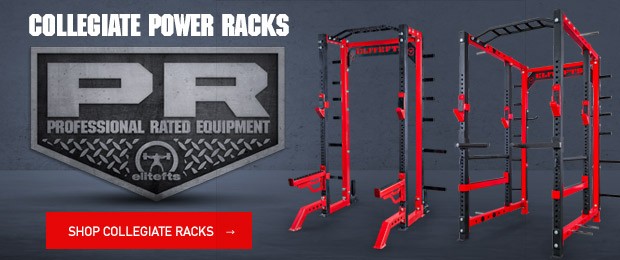
My one wish is to die in the gym after setting a new PR and then have my body outlined in chalk.
Thanks again.